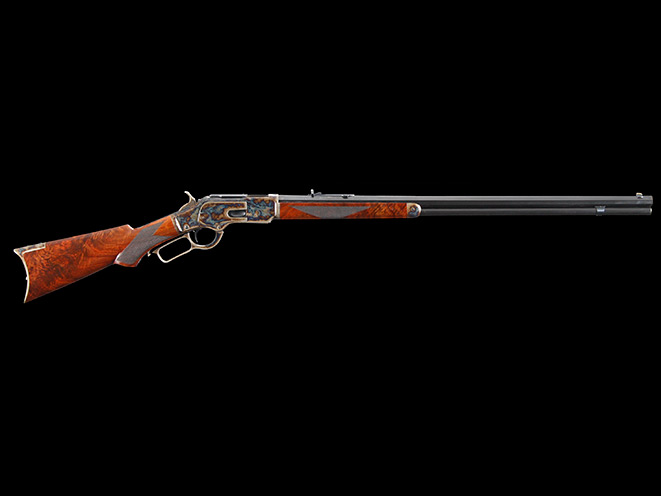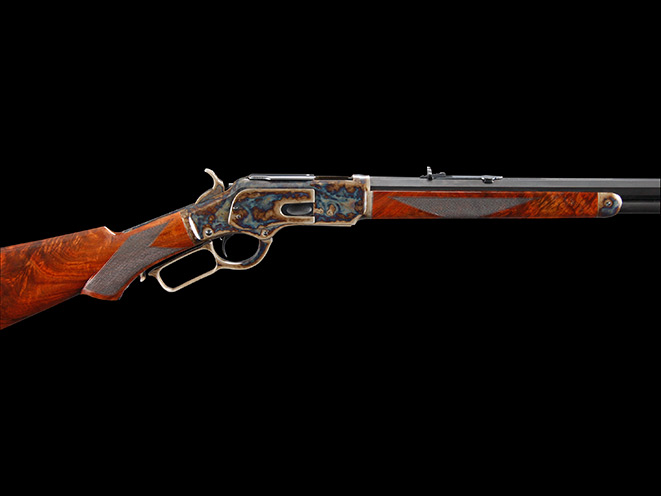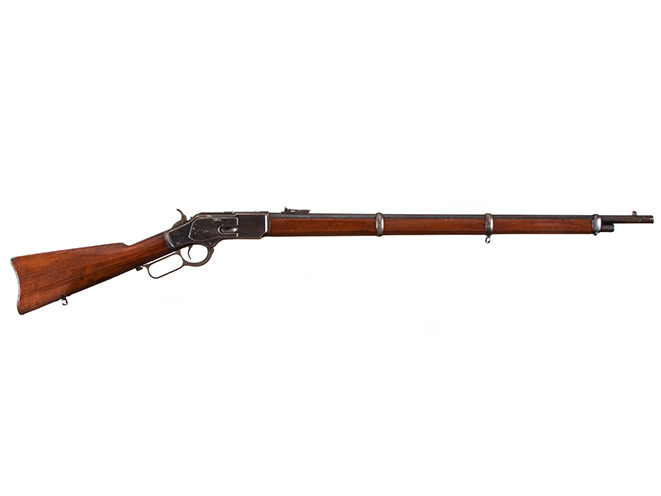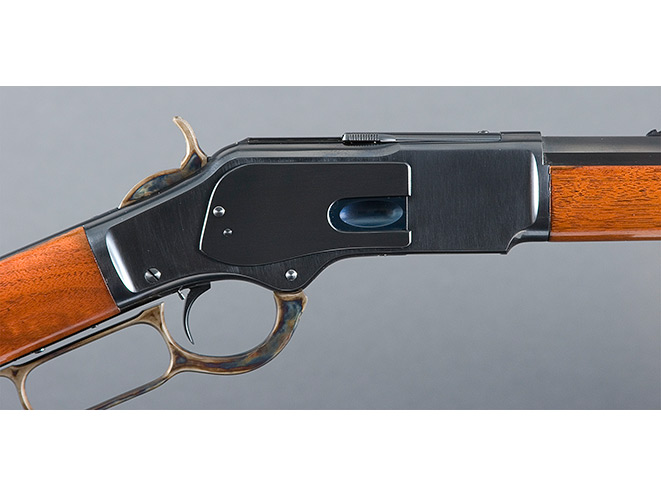By Bill Vaznis
There is no doubt about it. Lever-action rifles have been fueling childhood imaginations ever since Westerns began ruling the airwaves in the 1950s and 1960s. Indeed, each mounted cowboy back then had to have saddlebags, a coiled lariat and a lever-action rifle stuffed into a scabbard to help authenticate his character on screen.
Ironically perhaps, in the opening scenes of High Noon, arguably one of the top 10 Westerns every produced, you see fast-riding cowboy Ben Miller, played by the late Sheb Wooley, galloping towards a meeting with a fellow outlaw, Jack Colby, played by the late Lee Van Cleef. Look carefully—there’s no rifle in his scabbard!
Advertisement — Continue Reading Below
The Winchester Model 1873 was manufactured between 1873 and 1919, and it was one of the most successful rifles of its day. Originally chambered in .44-40 Winchester, it was later made available in popular pistol cartridges of the day, namely the .38-40, the .32-20 and the .25-20 calibers, widening its appeal. The steel-framed lever action was seen as an improvement over the bronze-alloy frame of the Winchester Model 1866 chambered in the weaker .44 Henry rimfire, which, of course, also added to the 1873’s popularity.
Western Icon
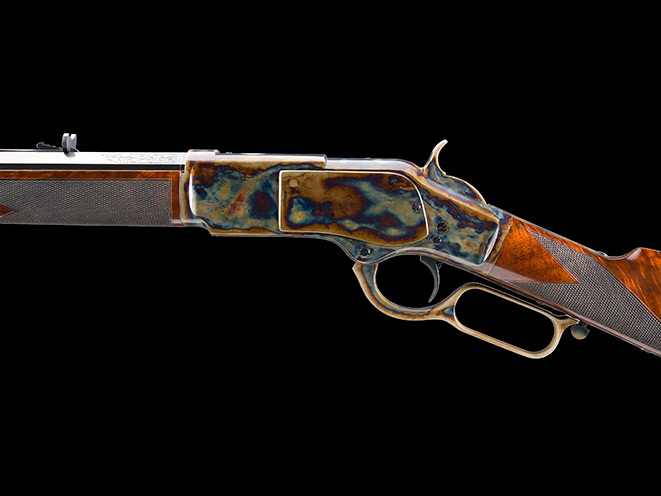
The Winchester Model 1873 was a heavy gun by modern standards, tipping the scales at 9.5 pounds with its 15-round tubular magazine loaded to the gills. Even so, nearly three quarters of a million ’73s were constructed (720,000), helping it to earn the reputation as the “gun that won the West.”
Advertisement — Continue Reading Below
RELATED STORY: 6 Manufacturers Selling Lever-Action Rifles For Home Defense Or Hunting
The ’73 was produced in three variations. The full-sized version with a 24-inch barrel had a modicum of success, while a musket version with a full-length military stock accounted for, at best, 10 percent of the total guns offered. It was the carbine variant with a 20-inch barrel, however, that was the most popular, in part because the slim receiver made it easy to grasp and carry with one hand, and it was quick to slide in and out of a horse-bound scabbard.
Its popular success later prompted Colt to offer single-action revolvers in the .44-40 Winchester caliber, naming it the Colt Frontier Six-Shooter. One of the main attractions of the Frontier Six-shooter is that is used the same ammunition as the Winchester ’73.
Advertisement — Continue Reading Below
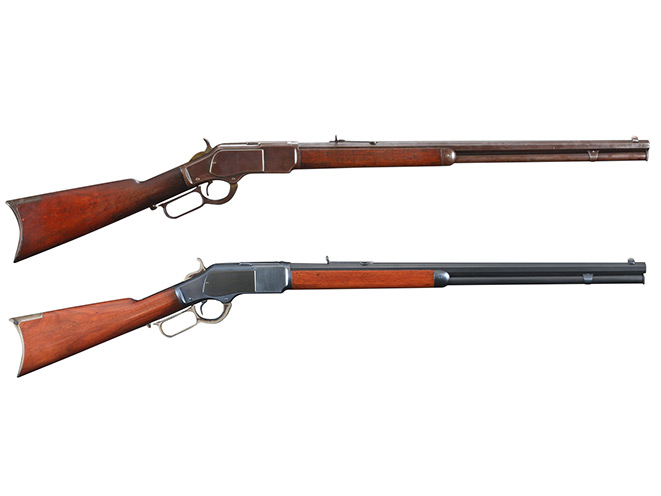
Before each rifle left the Winchester Repeating Arms Company plant in New Haven, Connecticut, it was test-fired. Those with better-than-average accuracy were engraved with “One of One Hundred” on the barrel. Only eight were sold with such an inscription, but those rifles with even smaller groups were engraved “One of One Thousand” and these sold for $100 over the list price, a high sum in the days of the Old West.
The Winchester Model 1873’s reputation was cemented in modern times with the 1950 Jimmy Stewart Western Winchester ’73. The story line was centered on a super-accurate “One of One Thousand” rifle, and it remains so popular the film still pops up on television for marathons and late-night reruns. Of course, you can still own one of the original Winchester ’73s by surfing many popular gun sites on the internet. Used ’73 lever actions run from just under $1,000 to nearly $20,000 a copy.
You might even have one of the “guns that won the West” stored in a family gun cabinet. Maybe your grandfather left you one in his will or you acquired one through an estate auction. Many of these guns were used and abused, however, and are in dire need of repair or restoration.
Advertisement — Continue Reading Below
Back To Life
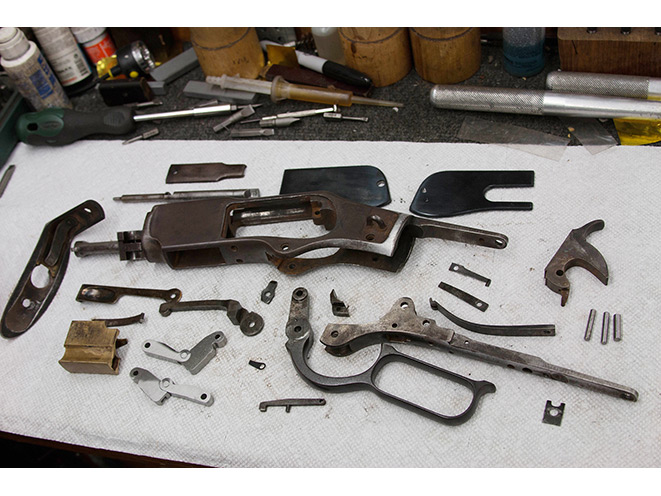
Doug Turnbull of Turnbull Manufacturing, located in upstate New York, is widely accepted as the premier restorer of vintage Winchester lever-action rifles, and Doug himself has become easily recognizable at outdoor shows and gun auctions in his black derby hat.
RELATED STORY: Have Gun, Will Travel – Choosing and Securing a Trunk Gun
Advertisement — Continue Reading Below
“We get requests all the time on how we go about our restoration process,” said Turnbull. “We start by doing a complete disassembly of the gun, closely examining the wood and metal for defects and determining what parts need to be rebuilt or replaced. We also determine if any lettering or numbers need to be recut, and what, if any, charcoal bluing or color casehardening is needed. We then give the client a quote on what we think needs to be done to bring the gun back to its original condition. We carefully review that quote with the client and get approval before we begin to do any work.”
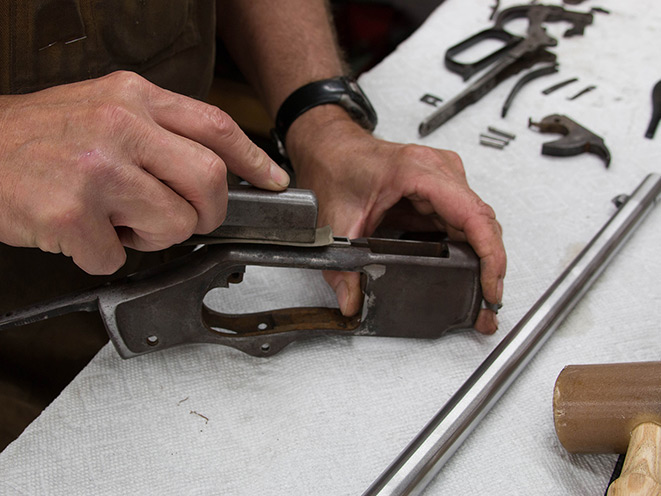
Turnbull starts by examining the condition of the firearm’s wood. “The wood is usually easy for us to bring back to original condition,” said Turnbull. “We begin by removing the wood from the action and then stripping off the old finish. We will repair any old repairs as needed, such as a crack in the stock that might have been glued improperly. We then put the wood back on the metal, sometimes sanding the wood on the metal with the aim of improving the metal-to-wood fit.”
Turnbull continued, “When we complete the sanding, adding any fillers that might be required, we stain the wood and apply the final finish. These stains and finishes are proprietary.” He added, “We will re-checker the wood if necessary. If the original version was not checkered, we can still do it now.”
Advertisement — Continue Reading Below
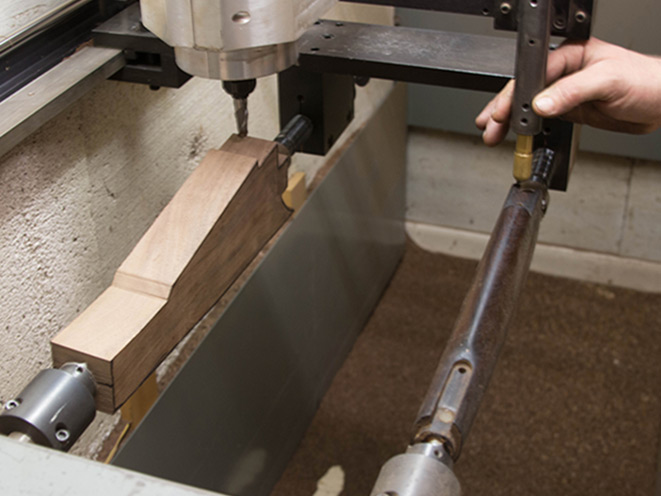
Next comes the metal restoration process. This includes looking for any rusted parts and examining the condition of any engraving. “We start the metal restoration by applying a raw file to any rusted areas, eventually smoothing out those areas with an emery cloth. This cleans the metal and makes it shine. If needed, we will retouch or reroll the barrel addresses or manufacturing markings so that their edges are sharp and easy to read,” said Turnbull.
RELATED STORY: On The Hunt With a Custom 7.62mm LaRue OBR
“If the barrel is badly pitted or otherwise in poor shape, we will replace the barrel. We then polish any metal parts as needed, paying particularly close attention to those areas around the dovetails before rust-bluing the barrel and magazine tube,” said Turnbull. “Next, we examine the receiver and do any repairs mechanically and/or along the outside edges before repairing, welding and reshaping any metal that is worn from use. Usually the upper rail dust cover needs to be rebuilt.
Advertisement — Continue Reading Below
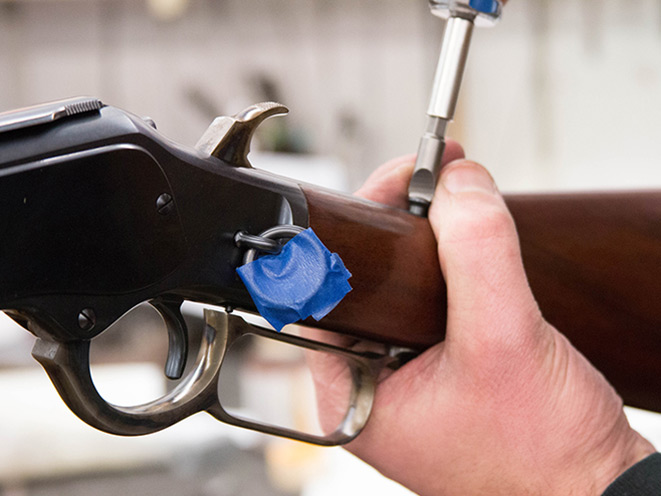
“Then we apply a raw file and emery cloth to smaller parts,” added Turnbull, “such as the front and rear gun sights and fitting screws. We will fix the slot in the original screws or replace those screws with new ones. Once the rest of the parts have been polished, we apply the original factory finish. We charcoal blue the magazine retaining band and loading gate, and, where appropriate, color caseharden all the small parts. Depending on the model, some receivers are charcoal blued and others are color casehardened. When all the finishing is completed, we reassemble the gun in reverse order, being careful not to scratch or dent any part of the gun.”
For more information, visit http://www.turnbullmfg.com or call 585-412-4963.
Advertisement — Continue Reading Below
This article was published in the 2017 edition of the Complete Book of Guns. For information on how to subscribe, please email subscriptions@
